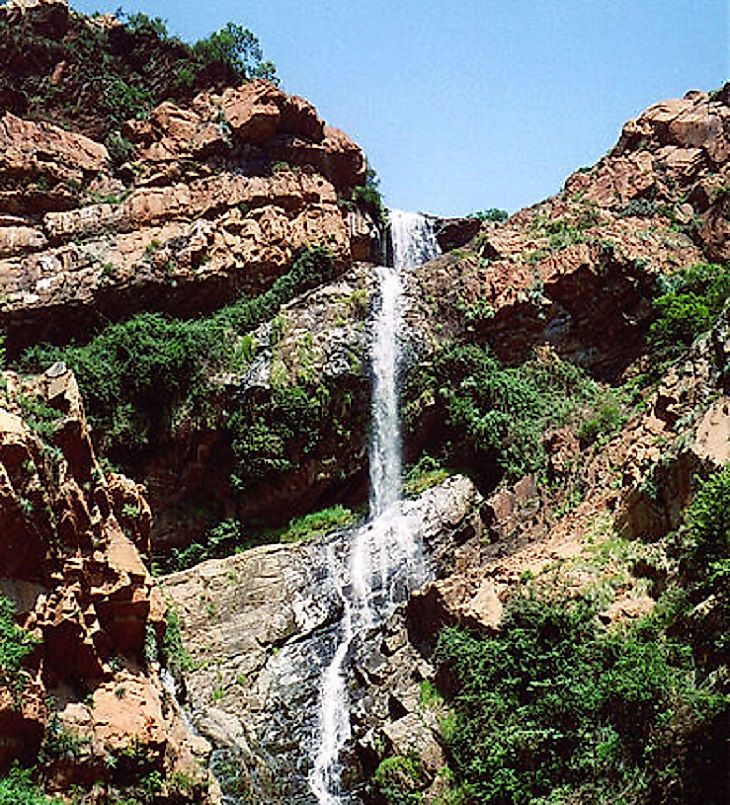What And Where Is Witwatersrand?

5. Description
Witwatersrand is a picturesque, 35-mile long escarpment in the Guateng Province of South Africa. It has an average elevation of around 5,600 feet. The scarp, primarily formed of hard, erosion resistant quartzite sedimentary rocks, as well as banded iron-stones and marine lava deposits interspersed with relatively softer rocks, nestles a large number of waterfalls. It is the presence of these spectacular waterfalls that has given the scarp its name of Witwatersrand, meaning the “ridge with white waters”. This highland forms the watershed between the Vaal and Limpopo Rivers. The scarp, forming the northern edge of a 7- to 10-kilometer wide plateau, arises from the surrounding Highveld, a part of the South African inland plateau.
4. Historical Role
The 5,000- to 7,000-meter thick sedimentary rocks that form the Witwatersrand escarpment started being deposited about 2,970 million years ago, and it took 260 million years for the present structure to take its shape. In 1886, gold was discovered in the Witwatersrand Basin, and since then half of all the gold that has been mined in the world has been derived from this and nearby sources. Scientists predict that the gold deposits in Witwatersrand formed nearly 3 billion years ago, when elemental gold formed compounds with sulfur that were washed down as acidic rain. The Archean microbes then triggered the precipitation of gold from the acidic waters, leading to the formation of vast deposits of this precious metal. After the discovery on gold here in 1886, European miners started migrating into the region, and soon the city of Johannesburg grew up in the Witwatersrand area.
3. Modern Significance
The Witwatersrand escarpment has immense geological significance, and its rock formations and rock composition yield valuable geological data to scientists. The huge deposits of gold in this region were the prime factor responsible for the growth and development of the city of Johannesburg, and also greatly aided the economy of South Africa as a whole for decades. Over 50,000 metric tons of gold were mined here, making up 50% of the total gold mined on our planet. The extreme economic significance of this geological formation is reflected in the fact that the South African currency was named the “Rand” in 1961 in honor of the region.
2. Habitat and Biodiversity
The Witwatersrand region experiences a subtropical highland climate, characterized by hot summer days with frequent afternoon showers, and dry, sunny winter days with cold nights. Much of the local flora and fauna of the region has been lost due to heavy mining activities, as well as to make way for the establishment of large commercial centers, including Johannesburg. The Highveld Region around Witwatersrand bears large tracts of grassland cover, and houses animal species like Straw-colored fruit bats, several species of rodents, and birds like Botha’s lark and the Blue crane, as well as snakes and other reptiles.
1. Environmental Threats and Territorial Disputes
The decades of mining in Witwatersrand have taken a huge toll on its ecosystems. The processes of extracting rocks by hollowing out the rock formations has created sinkholes in the region, and consequently destabilizing the earth around Witwatersrand. Sulfuric acid, generated from the iron pyrite associated with gold ores, leaches into the freshwater streams and rivers of the region, leading to acid mine damage.The acidified water then dissolves many other metals, like zinc, cadmium, arsenic, and uranium, rendering the water unfit for human use, as well as toxic for the support of the native aquatic biota. Sulfuric acid also corrodes building materials, causing ongoing damage to human property in the region.











